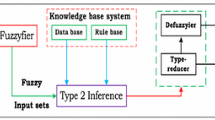Abstract
This paper presents an assessment method of the risks of occupational accidents based on fuzzy logic. The purpose of this work was to create a methodological instrument that can semiquantitatively assess the risk of occupational accidents for different industrial and site activities and to identify the most efficient intervention measures that can be taken to reduce risks. This approach, which is new in the assessment of the risk of occupational accidents, allows qualitative, imprecise and in some cases contradictory data to be elaborated, as the data that describe an occupational accident usually are. The set-up analysis model therefore allows (1) an assessment to be made of the level of risk of a work phase and/or a work sector, (2) a verification and quantification to be made of the reduction of the risk after having adopted preventive and/or protective measures and (3) a priority of interventions to be established on the basis of the assessed risk levels. It can be seen how the method, here applied to a company producing industrial vehicle tyres, can be considered applicable for any type of company, with the only prerequisite of having a record of sufficient and homogeneous number of accidents so as to be able to correctly instruct the software and tune the reference parameters.









Similar content being viewed by others
Abbreviations
- ACT:
-
Accidents consequences tree
- ASL:
-
Azienda Sanitaria Locale (Local Health Service)
- CTD:
-
Cumulative trauma disorders
- ESAW:
-
European Statistics on Accidents in the Work
- ISPESL:
-
Istituto Superiore per la Prevenzione e Sicurezza del Lavoro (Higher Institute for Prevention and Safety at Work)
- INAIL:
-
Istituto Nazionale Assicurativo Infortuni sul Lavoro (National Insurance Institute against Occupational Accidents)
- PPD:
-
Personal protective devices
- SIPRE:
-
Sistema Informativo per la Prevenzione (Knowledge System for Prevention)
- SPRESAL:
-
Servizio di Prevenzione e Sicurezza negli Ambienti di Lavoro (Prevention and Safety at Work Service)
- E :
-
contact factor
- F :
-
frequency of occurrence
- L :
-
degree of protective measures
- M :
-
possible damage
- R :
-
risk
- S :
-
severity of the consequence
References
Aaltonen M.V.P, Uusa Rauva E, Saari J, Anti-Poika M, Rusanen T, Vinni K (1996) The accident consequence tree method and its application by real-time data collection in the finnish furniture industry. Saf Sci 23(1):11–26
Arduini L, Lionzo R, Pianosi G, Scinardo M (1992) Sbagliando s’impara: guida alla conduzione delle inchieste infortuni, ASL n.70, Legnano, Settembre
Carcassi M, Cerchiara GM, Zambolin L, Romano G (2004) The influence of the human error on naval accidents. A fuzzy logic approach, Berlino, Giugno, Esrel, pp 13–18
Cheung-Mak S.K.P, Le May I (1993) Damage and fuzzy risk assessment in steam plants. Trans Can Soc Mech Eng 17(2):111–125
Christen P, Basler E, Bohnenblust H, Seitz S (1994) Methodology for assessing catastropic damage to the population and environment: a quantitative multi-attribute approach for risk analysis based on fuzzy set theory. Process Saf Prog 13(4):234–238
Dubois D, Prade H (1980) Fuzzy sets and systems: theory and applications. Academic, New York
Eurostat (1998) European statistics on accidents at work—methods and definitions, Catalogue number CA-19–98-908-EN-S
Hauptmanns U, Mar M, Knetsch T (2005) GAP—a fault–tree based methodology for analyzing occupational hazard. J Loss Prevent Process Ind 18:107–113
Ikejima K, Dan M. Frangopol (1987) Risk assessment for gas pipelines using fuzzy sets. Civil Eng Syst 4(3):147–152
Inail (2000) Report Annuale
Marsequerra M, Zio E, Bianchi M (2004) A fuzzy modeling approach to road transport with application to a case of spent nuclear fuel transport. Nucl Technol 146(3):290–302
Mattila M. K (1985) Job load and hazard analysis: a method for the analysis of worplace conditions for occupational health care. Br J Ind Med 42:656–666
McCauley-Bell P, Badiru A. B (1996) Fuzzy modeling and anlytic hierarchy processing to quantify risk levels associated with occupational injuries. IEEE Trans Fuzzy Syst 4(2):124–138
Murlidharan T.L, Durgaprasad J, Appa Rao T.V.S.R (1997) Knowledge-based expert system for damage assessment and vulnerability analysis of structures subjected to cyclones. J Wind Eng Ind Aerodyn 72(1–3):479–491
Patrucco M (1997) Sicurezza e Ambiente di Lavoro. Trauben, Torino
Rasmussen Report, Nuclear Regulatory Commission (1975) An assessment of accidents risk in US commercial nuclear power plants, WASH 1400, Washington
Rikhardsson P.M, Impgaard M (2004) Corporate cost of occupational accidents: an activity-based analysis. Accid Anal Prev 36:173–182
Sato M, Sato Y, Jain L.C (1996) Fuzzy Clustering Models and Applications. Polish Academy of Sciences, Varsavia
Yong Jeong B (1999) Comparisions of variables between fatal e nonfatal accidents in manufacturing industry. Int J Ind Ergonom 23:565–572
Zadeh L.A (1965) Fuzzy Sets. Inform Control 8:338–353
Zadeh L.A (1976) A Fuzzy-Algorithmic Approach to the Definition of Complex or Imprecise Concepts. Int J Man-Machine Stud 8(3):249–291
Acknowledgements
The authors would like to thank Dr. Simone Cencetti, in charge of the Safety Department of Pirelli, Mr. Domenico Cisotto, in charge of the Safety and Environment Department of the Pirelli Industrial Vehicle Company in Settimo Torinese and Dr. Andrea Dotti, in charge of the SPRESAL ASL 7 Service in Chivasso and the inspectors of the same service.
Author information
Authors and Affiliations
Corresponding author
Rights and permissions
About this article
Cite this article
Murè, S., Demichela, M. & Piccinini, N. Assessment of the risk of occupational accidents using a “fuzzy” approach. Cognition,Technology & Work 8, 103–112 (2006). https://doi.org/10.1007/s10111-005-0025-5
Received:
Accepted:
Published:
Issue Date:
DOI: https://doi.org/10.1007/s10111-005-0025-5




